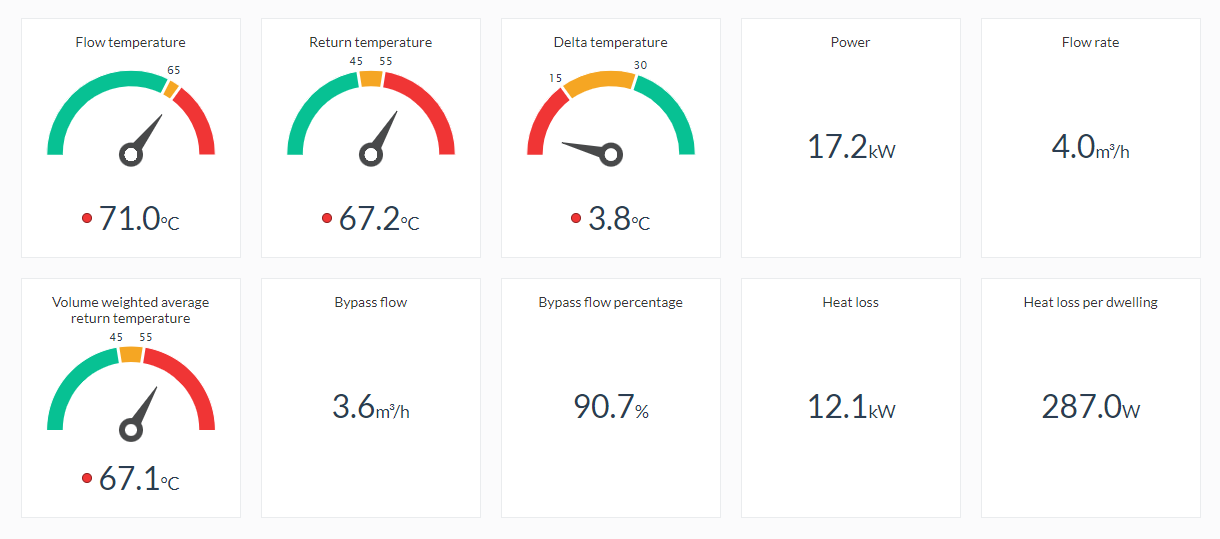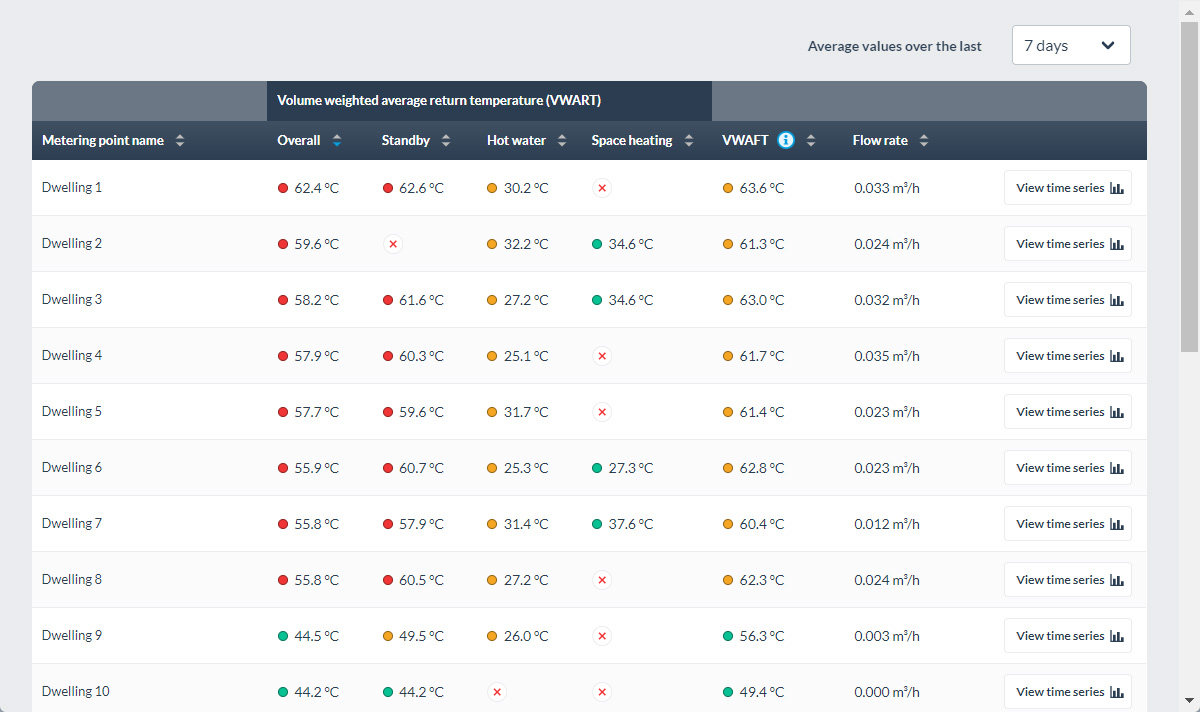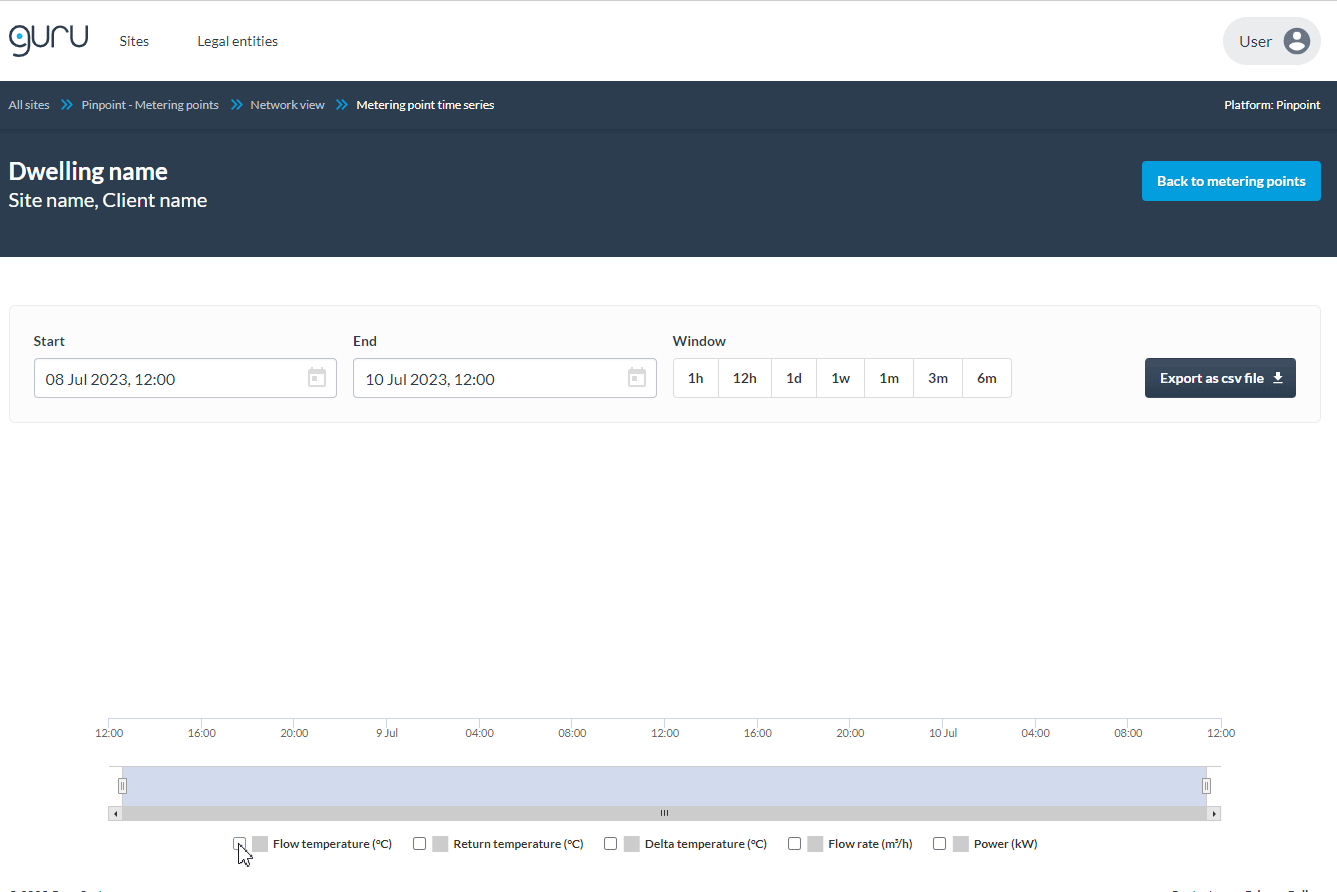The Heat Network Efficiency Scheme (HNES) is a £32m grant funding scheme to improve the performance of existing heat networks. Guru Systems supported six projects as part of the previous HNES Demonstrator that ran in 2021/22, and we can now confirm that every bid to Round 1 of the main HNES scheme that included Guru Systems technology was successful.
HNES funding is being delivered across 9 rounds. The next deadline is for Round 5 on Friday 13 October, and there are 3 remaining rounds beyond this. Read more below about how our technology can support HNES applications, and get in touch if you’re planning to submit for future rounds.
Guru Systems technology for improved heat network performance
Guru Systems captures performance data from over 250 heat networks in the UK. Over the past ten years, we’ve worked with a wide range of local authorities, housing associations, and private developers to support them as they improve the performance of their heat networks and help reduce resident costs.
We drew on this experience to support six projects as part of the HNES Demonstrator and the same method will be used on the projects we’re working on as part of the HNES main scheme. HNES capital funding was used to install either Guru Hub 2 or Guru Hub 3 to capture performance data, and all projects then used Guru Pinpoint to identify problems and inefficiencies. Interventions were made, with results visible in the data.
How does Guru Pinpoint direct heat network performance improvements?
Below is a good example of a poorly performing heat network. Using Guru Pinpoint’s dashboard we are able to quickly see that something isn’t right using the traffic light system. Flow temperature, return temperature and Delta T are all coded in red. Heat loss per dwelling is high, as are the bypass flow rates.

From here, we can view a list of dwellings on this network, ordering by Overall VWART to identify poorly performing dwellings before taking a closer look at time series data.

If we then look more closely at one of the dwellings on this network, we can see a similar pattern here too: tightly coupled flow and return temperatures with a consistently high flow rate regardless of whether heat is being demanded or not. This tells us that interventions need to be made at the dwelling level, not just in the plant room.

Using Guru Pinpoint, network operators can identify exactly where heat networks are experiencing issues and then recommend the most effective interventions to promote efficiency and performance.
Read more >> Case study: Mildmay – HNES demonstrator
How Guru Systems can support HNES reporting requirements
Successful HNES projects are subject to a variety of minimum reporting requirements – including reporting performance-related KPIs for 24 months after all funding measures have been installed and commissioned.
Project KPIs
To monitor network performance including the impact of delivered measures (relative to baseline)
Quarterly (submission of 3 sets of monthly KPI data)
Start: first quarter end after funding award confirmed. End: 24 months (eight quarters) after all funded measures have been installed and commissioned
Guru Pinpoint displays heat network data across six registers: flow temperature (°C), return temperature (°C), flow rate (m3/hour), volume (m3), instantaneous power (kW), and energy (kWh).

Section 1.2 in the Scheme guidance details what kind of performance-related KPIs should be included:
“Suppliers will propose and quantify suitable metrics, targets, and KPIs for measuring Project operational performance, based upon previous experience of delivering similar work. The baselining must cover assessment of the whole network architecture, including plant room/energy centre, primary/secondary/tertiary network, and customer interfaces.”
“KPIs will be Project-specific, but the Supplier should aim to report against as many as possible of the following:
- Annual network carbon emissions (kg.CO2e)
- Carbon content of delivered heat (kg.CO2e/kWh)
- Annual fuel use (gas, electricity, other) (kWh)
- Overall network efficiency (gas in / heat out) (%)
- Network distribution efficiency (heat leaving energy centre/heat delivered) (%)
- Network distribution losses (broken down by primary, secondary, and tertiary where possible) (kWh)
- Network heat losses (W/dwelling)
- Network flow and return temperatures (deg)
- Cost to the operator of delivering heat to customer interfaces (p/kWh)
- Heat tariff paid by network customers (p/kWh [variable], £/day [fixed])
- Overheating (description / annual number of hours reduction)
- Service outages/interruptions, planned and unplanned (# in a recent 12-month period)
- Service outages/interruptions, planned and unplanned (total no. hours in a recent 12-month period)
- Other appropriate/relevant KPIs or metrics as proposed by the Client to support assessment of the performance of a heat network.”
Guru Pinpoint can provide data to support these performance reporting requirements.
If you would like to find out more about applying for HNES funding and where Guru Systems and Guru Pinpoint can help, please contact us.

